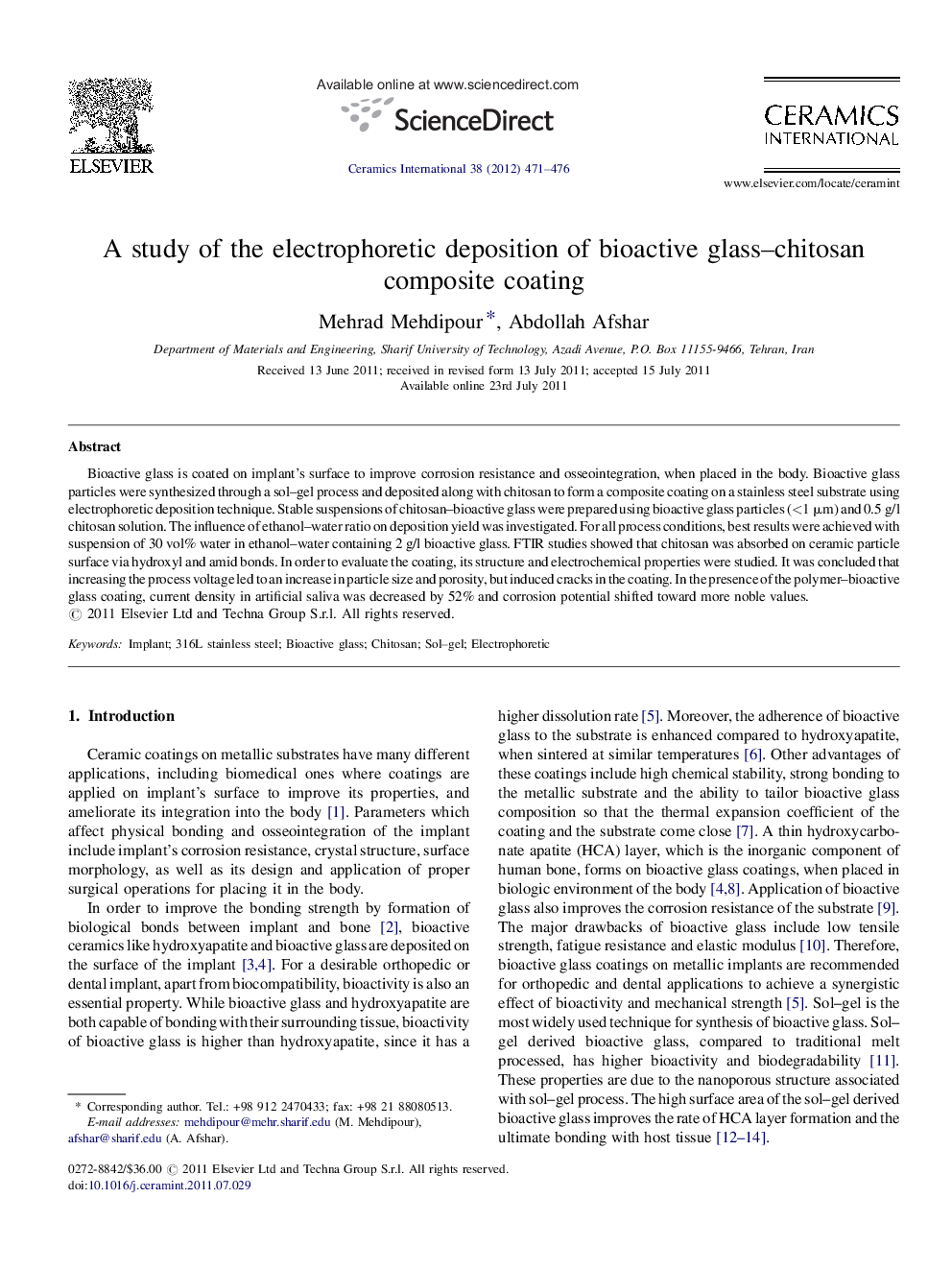| Article ID | Journal | Published Year | Pages | File Type |
|---|---|---|---|---|
| 1462884 | Ceramics International | 2012 | 6 Pages |
Bioactive glass is coated on implant's surface to improve corrosion resistance and osseointegration, when placed in the body. Bioactive glass particles were synthesized through a sol–gel process and deposited along with chitosan to form a composite coating on a stainless steel substrate using electrophoretic deposition technique. Stable suspensions of chitosan–bioactive glass were prepared using bioactive glass particles (<1 μm) and 0.5 g/l chitosan solution. The influence of ethanol–water ratio on deposition yield was investigated. For all process conditions, best results were achieved with suspension of 30 vol% water in ethanol–water containing 2 g/l bioactive glass. FTIR studies showed that chitosan was absorbed on ceramic particle surface via hydroxyl and amid bonds. In order to evaluate the coating, its structure and electrochemical properties were studied. It was concluded that increasing the process voltage led to an increase in particle size and porosity, but induced cracks in the coating. In the presence of the polymer–bioactive glass coating, current density in artificial saliva was decreased by 52% and corrosion potential shifted toward more noble values.
